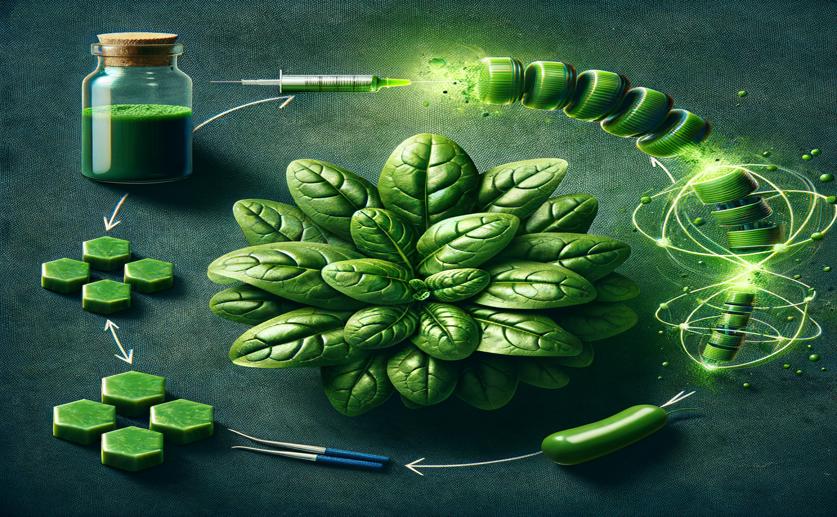
Stabilized Green Food Color from Spinach: How a Special Enzyme Process Works
Jim Crocker
2nd August, 2024

Image Source: Natural Science News, 2024
Key Findings
- Researchers at Tuscia University, Italy, developed a new method to extract chlorophyll from spinach without using organic solvents
- The method uses a biocatalyst and zinc chloride (ZnCl2) to enhance chlorophyll yield and stability
- Optimal conditions (0.10 U/g enzyme, 3 hours extraction, 150ppm ZnCl2 at 25°C) increased chlorophyll yield by 51% compared to the control
References
Main Study
1) Stabilized chlorophyll-based food colorants from spinach: Kinetics of a tailored enzymatic extraction.
Published 31st July, 2024
https://doi.org/10.1111/1750-3841.17269
Related Studies
2) Chlorophylls as Natural Bioactive Compounds Existing in Food By-Products: A Critical Review.
3) Novel Approaches for the Recovery of Natural Pigments with Potential Health Effects.
4) Natural colorants from vegetable food waste: Recovery, regulatory aspects, and stability-A review.
5) Evaluation of stability and antibacterial properties of extracted chlorophyll from alfalfa (Medicago sativa L.).



 13th April, 2024 | Jenn Hoskins
13th April, 2024 | Jenn Hoskins